| 
 Evaluation by the students Evaluation by the students
 Achievments 2020 2019 2018 2017 2016 2015 2014 2013 2012 2011 2010 2009 2008 2007 2006 2005 2003 Achievments 2020 2019 2018 2017 2016 2015 2014 2013 2012 2011 2010 2009 2008 2007 2006 2005 2003
 MISJ e-Learning program Please send e-mail to: info@ilpd.jp MISJ e-Learning program Please send e-mail to: info@ilpd.jp
 MISJ is: MISJ is:
extraordinarily effective in teaching Japanese language.
In 12 days (24-36 hours of lessons), you can master
1)survival communication
2)everyday conversation skills using grammatically correct sentences
3)reading large numbers and basic letters
In about three months in the shortest, you can master
1)enough conversational skills to take OJT training in Japanese
2)reading and writing ability
3)a good understanding of Japanese back gournd culture
 MISJ is: MISJ is:
extraordinarily effective in developing teachers.
The advantage of MISJ (Mikiko Iwasaki's SYSTEMATIC JAPANESE)
 Interview test after 12 days (video: wmv file) Interview test after 12 days (video: wmv file)
& Composition
About the program she attended
 Report after taking five days (10 hours) trial lessons Report after taking five days (10 hours) trial lessons
Written by
Dr. Abdullatif A. Al-Jumaily, Ph.D.
Prof. of Applied Linguistics, College of Arts, Univ. of Bagdad
*Sound materials were not provided because it was
a trial course.
 Structure of MISJ Structure of MISJ
MISJ provides not only a beginner’s program but also an intermediate program.
Chart of its structure The goal of each MISJ programs
 Evaluation by the students Evaluation sheet Evaluation by the students Evaluation sheet
2005 ~ 2007 : answered by 123/127 students
★Explanations
| Simple & clear |
71 |
| Easy to understand & memorize |
71 |
| Too difficult to understand |
0 |
★Do you think MISJ is:
| |
YES |
NO |
| Systematic? |
119 |
1 |
| Efficient? |
103 |
2 |
| Effective? |
105 |
2 |
| Enjoyable? |
107 |
3 |
| Recommendable? |
120 |
3 |
*Only a few Korean students answered "NO". They were unhappy because
their class which had been supposed
to be continued for four months
was canceled after the WELCOME PROGRAM.
 Achievements Achievements
2020
2019 2018 2017 2016 2015 2014 2013 2012 2011 2010 2009 2008 2007 2006 2005 2003
 2020 January~ Online teachers training 2020 January~ Online teachers training
For Congo Japan Complex, Congo(DRC), 8 participants
 2020 April~July Online Japanese lesson 2020 April~July Online Japanese lesson
For SVERI’s College of Engineering, Pandahrpul, India, 60 students
 2019 August 22 th~25th 2019 August 22 th~25th
At UWC ISAK JAPAN *No picture due to the security reason
Japanese Language Study Orientation for students
47 students from 43 countries
Japanese Language Class for teachers
5 participants
 2019 August 12 th~16th 2019 August 12 th~16th
At UWC ISAK JAPAN *No picture due to the security reason
https://uwcisak.jp/
Japanese Language Study Orientation for teachers
10 participants from 9 countries
 2018 November 6th ~December 25th in Nara Prefecture 2018 November 6th ~December 25th in Nara Prefecture
At Nara Institute of Science and Technology
Japanese course for beginners was provided for
5 graduate students and one research student of Nara Institute of Science and Technology came from five countries.
Once a week 7 three-hour face to face lessons plus achievement test.
6 students successfully pass the exam and 5 students got official credits.
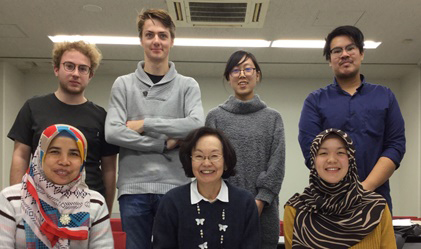
Questionnaire results
 2017 October 17th ~December 7th in Nara Prefecture 2017 October 17th ~December 7th in Nara Prefecture
At Nara Institute of Science and Technology
Japanese course for beginners was provided for
26 graduate students of Nara Institute of Science and Technology
came from six countries.
Once a week 7 three-hour face to face lessons plus achievement test.
24 students successfully pass the exam and got official credits.
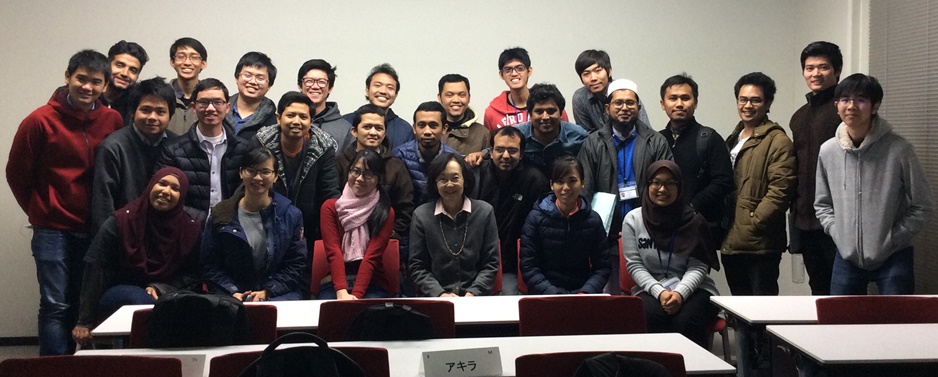
Questionnaire results
 2016 October 18th~December 6th In Nara Prefecture Japan 2016 October 18th~December 6th In Nara Prefecture Japan
Japanese course for beginners was provided for
20 graduate students of Nara Institute of Science and Technology
came from eight countries.
Once a week 7 three-hour lessons plus achievement test.
All students successfully passed the exam and got official credits.
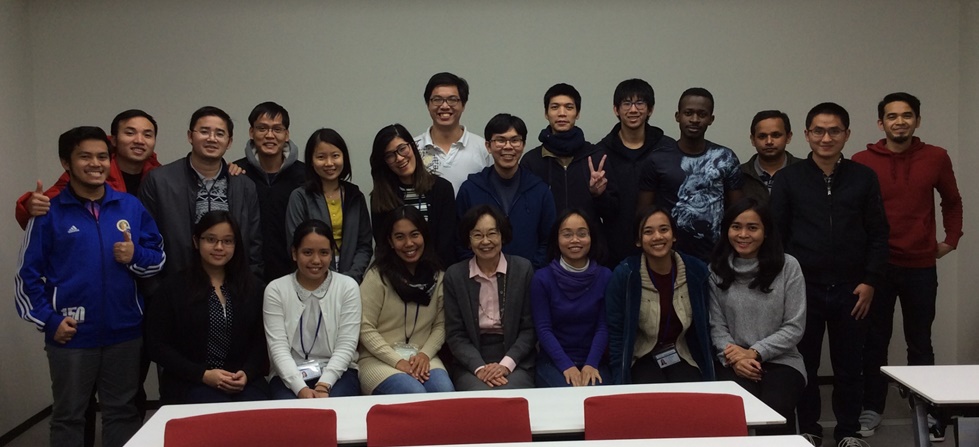
Questionnaire results
 2015 December 7th~2016 January 29th In Tokyo 2015 December 7th~2016 January 29th In Tokyo
The department of computer science and technology of
Waseda University provided MISJ lessons for graduate students.
Four face-to-face lessons, e-learning and an achievement test.
Congolese MISJ teachers taught the face-to-face lessons.
Only 6 students appeared to take the achievement test.
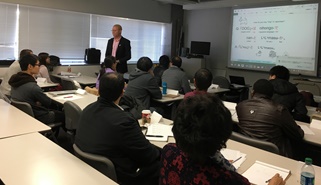
Questionnaire results
 2015 August 24th~September 18th In Hanoi 2015 August 24th~September 18th In Hanoi
Japanese language class was provided along with
the MISJ Teachers training course.
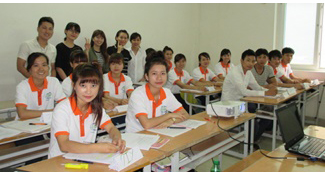
 2015 June 2nd~July 9th In Hanoi 2015 June 2nd~July 9th In Hanoi
Japanese language class was provided along with
the MISJ Teachers training course.
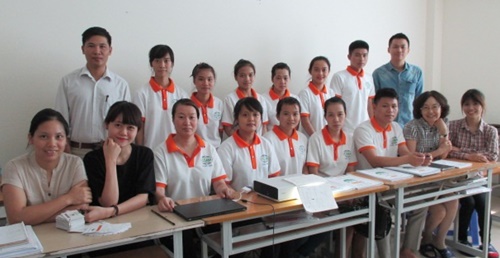
 2015 October 6th~December 8th In Nara Prefecture Japan 2015 October 6th~December 8th In Nara Prefecture Japan
Japanese course for beginners was officially provided for
25 graduate students of Nara Institute of Science and Technology
came from seven countries.
Once a week 7 three-hour lessons plus achievement test.
23 students successfully passed the exam and got credits.
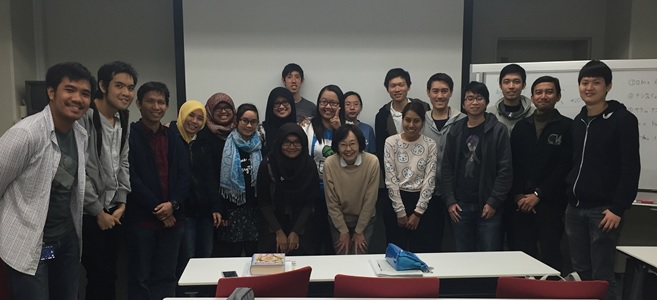
Questionnaire results
 2014 October 3rd~November 21 In Nara Prefecture Japan 2014 October 3rd~November 21 In Nara Prefecture Japan
Special trial course was provided for 15 graduate and research
students of Nara Institute of Science and Technology.
14 two-hour lessons (Achievement test is included.)
Basically
twice a week.
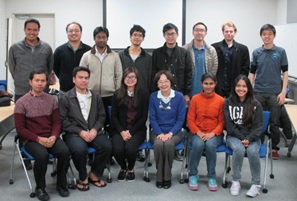
Questionnaire results
 2014 June ~August in Kamakura Japan 2014 June ~August in Kamakura Japan
Two AT were invited to Japan and qualified as MISJ
WELCOME PROGRAM instoructors.
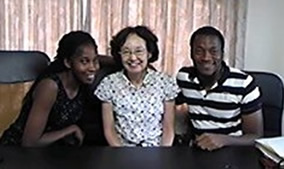
 2013 November ~2014January In Kamakura Japan 2013 November ~2014January In Kamakura Japan
Three TA
were invited to Japan and qualified as MISJ instructors.
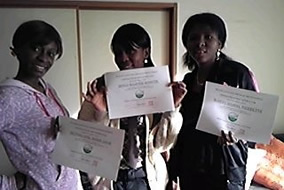
 2013 March In Kinshasa, Con go(DRC) 2013 March In Kinshasa, Con go(DRC)
Special intensive teacher training course was provided to Congoliese
students who have been taught by Congolese instructors.
Five Congolese were qualified as TA for MISJ WELCOME PROGRAM.
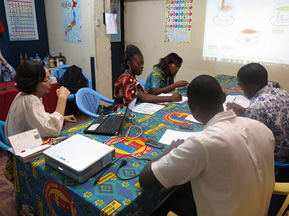
 2012 October~December In Tokyo Japan 2012 October~December In Tokyo Japan
Three Congolese were invited to Japan and qualified as
MISJ instrcutors.
 2012 April~July In Kinshasa, Congo(DRC) 2012 April~July In Kinshasa, Congo(DRC)
WELCOME PROGRAM implemented by instructors who had studied
Japanese using MISJ was successfully completed.
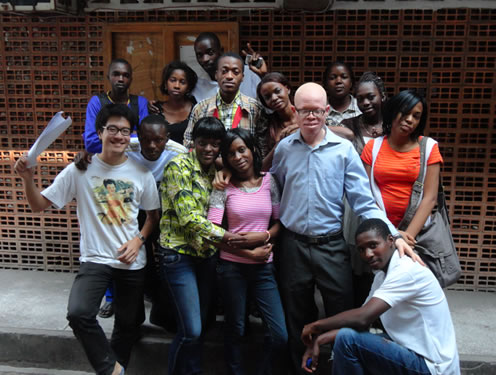
 2012 March In Kinshasa, Congo(DRC) 2012 March In Kinshasa, Congo(DRC)
Three students successfully completed the whole MISJ programs
and the basic teacher training course. Now these three and
two Japanese students are providing several classes.
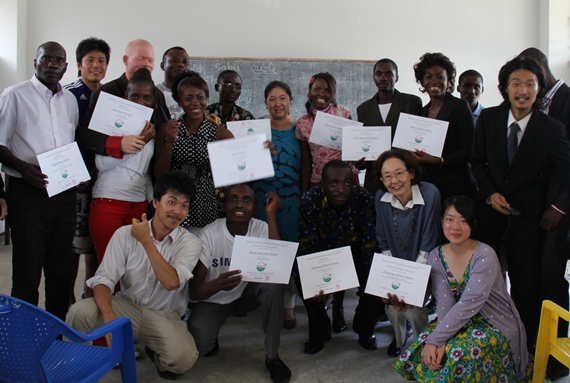
 2011 May ~ 2011 May ~
Japanese classes started as a joint project of Keio University,
ISP GOMBE and ILPD Inc. At ISP GOMBE in Kinshasa, Congo(DRC)
 2010 April 19th ~ 2010 July 21st 2010 April 19th ~ 2010 July 21st
Alyance Software Japan Inc. In Cebu City, The
Philippines
(67 days, 201 hors, fifteen students including ten
with no previous experience of Japanese language study.
Taught by one Japanese instructor and one Japanese
prospective instructor.
)
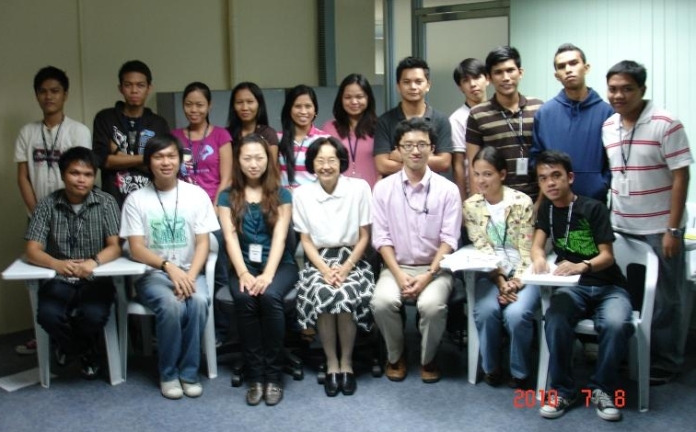
 2009 March 30th ~ 2009 July 9th 2009 March 30th ~ 2009 July 9th
Sunby Inc. In Beijing, China
(59 days, 177 hours, twelve students. Taught by one Japanese
instructor and five Chinese prospective instructors.)
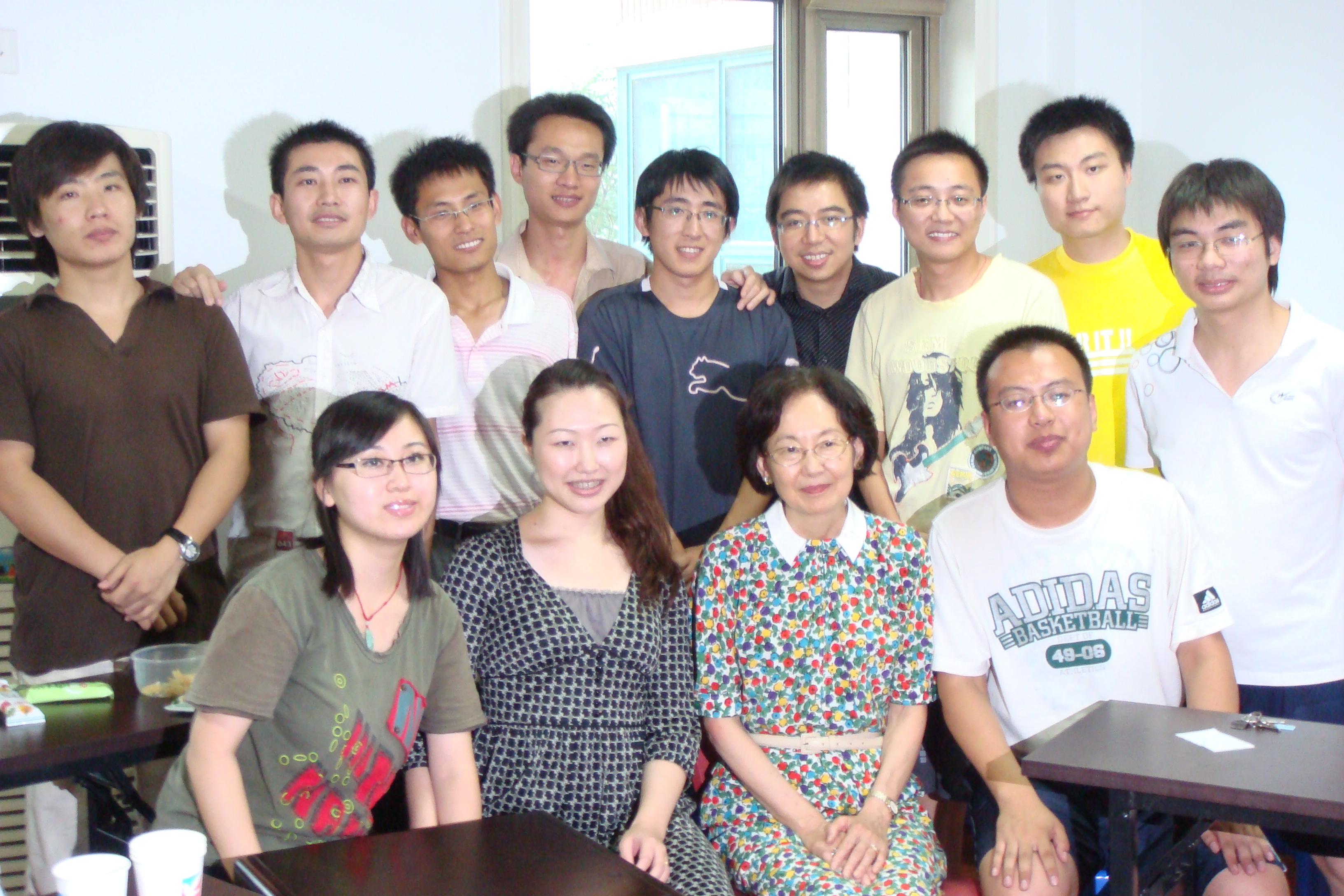
 2008 July 21st~ 2008 November 27th 2008 July 21st~ 2008 November 27th
NISSAN TECHNO VIETNAM Co., Ltd. In Hanoi, Viet Nam
(82 days, 282 hours, eight students with no previous experience of Japanese language study.)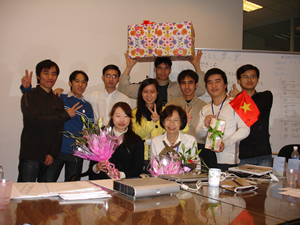
 2008 July 1st~ 2008 August 28 2008 July 1st~ 2008 August 28
National Institute for Physiological Sciences, Okazaki, Japan
(One Ph. D-student from Bulgaria and one researcher from Uzbekistan)
E-learning program plus schooling
To Whom It May Concern,
It was the most effective study program which I found during my
stay in Japan. It was useful to improve my Japanese knowledge
even my busy schedule. I strongly recommend MISJ program
to those who are interested in learning Japanese language in
short time. Aug 29, 2008 Loukanov Alexandre (Bulgaria)
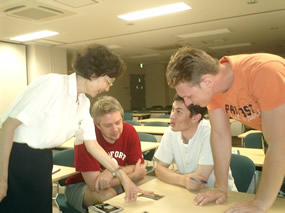
 2008 May. 12th~2008 July. 31st 2008 May. 12th~2008 July. 31st
Sunby Inc. In Beijing, China
(59 days, 177 hours,
thirteen students. Taught by one Japanese
instructor and eight Chinese prospective instructors.
 2007 July. 23rd~2007 Nov. 30th 2007 July. 23rd~2007 Nov. 30th
NISSAN TECHNO VIETNAM Co., Ltd. In Hanoi, Viet Nam
(82 days, 282 hours, seven students with no previous experience of Japanese
language study
)
The result of
The Japanese-Language Proficiency Test
which held
on December 2nd, 2007:
five students passed Level 3
Scores: 294, 285, 271, 250, 246, 239, 216 /400
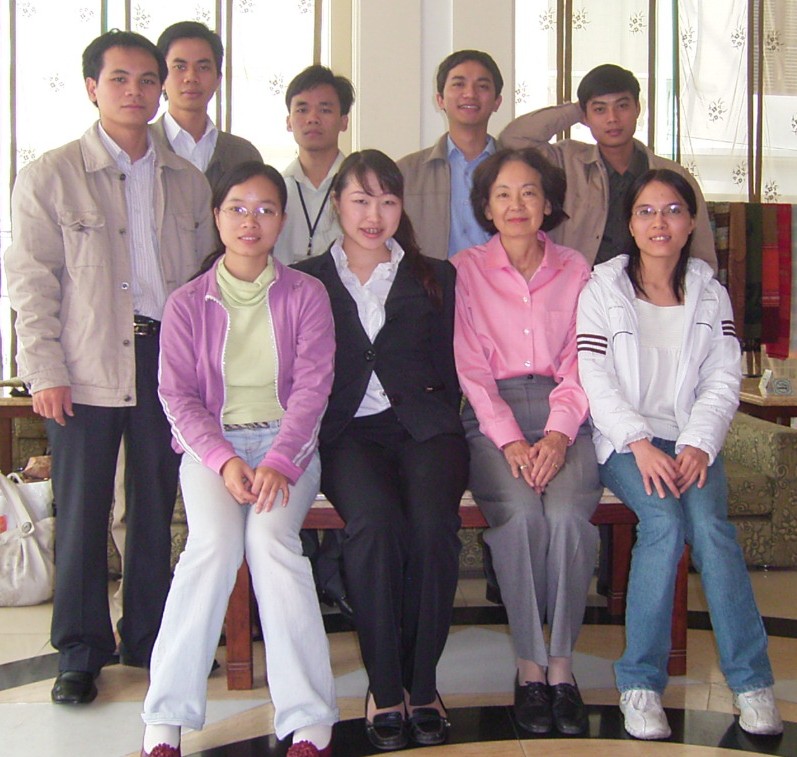
 2006 Nov. 27th ~ 2007 Mar. 30th 2006 Nov. 27th ~ 2007 Mar. 30th
NISSAN TECHNO VIETNAM Co., Ltd. In Hanoi, Viet Nam
(80 days, 262 hours, four students ⇒ three students)
Compositions after the WELCOME PROGRAM (0 + 12 days)
1 2
Picture after the WELCOME PROGRAM
Compositions after NOVICE PROGRAM LEVEL 2 (0 + 38 days)
1 2
Presentation: Mar. 22nd (0 + 75 days, 252 hours)

Picture script(1) script(2) script(3) sctipt(4) script(5)
 Picture script Picture script  Pciture script Pciture script
Picture of the class: next day of the presentation
 2006 Sep. 25th ~ Dec. 15th
In Tokyo 2006 Sep. 25th ~ Dec. 15th
In Tokyo
(56 days, 140 hours, 10 students from eight Asian countries)
Picture of the class
Picture of the presentation 1 2 3 4 5 6 7 8 9 10
 2006 Aug, In Seoul, Korea 2006 Aug, In Seoul, Korea
(12 days, 40 hours, 30 students)
 2006 May. In Tokyo 2006 May. In Tokyo
(brush-up course, 7 days, 42 hours, 58 studetns)
 2006 Mar. In Tokyo 2006 Mar. In Tokyo
(brush-up course, 12 days, 30 hours, 4 students)
Picture of the class
 2005 Dec. In Ho Chi Minh City, Viet Nam 2005 Dec. In Ho Chi Minh City, Viet Nam
(12 days, 12 lessons, 30 hours)
Picture of the class
Tape-recorded interview test examples
 (0 hour + 30 hours) (0 hour + 30 hours)
Composition: After 6 days Achievement test
 before: 6 months after: + 11 days, 27.5 hours before: 6 months after: + 11 days, 27.5 hours
 2005 Oct. In Yangon, Myanmar 2005 Oct. In Yangon, Myanmar
(11 days, 11 lessons, 28 hours)
Picture of the class
Tape-recorded interview test examples
Interview test was held before the last three hour lesson.
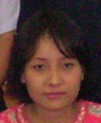 (0 hour + 25 hours) (0 hour + 25 hours)
Composition: After 6 days Achievement test
 before: 40 hours after: +10 days, 25 hours before: 40 hours after: +10 days, 25 hours
 2005 Aug. In Tianjin, China (12 days, 12 lessons, 30 hours) 2005 Aug. In Tianjin, China (12 days, 12 lessons, 30 hours)
Composition examples
After 5 days After 6 days After 7 days
After 8 days After 9 days After 10 days
After 11 days
Achievement test (0 hour + 30 hours)
Achievement test (20 hours + 30 hours)
Tape-recorded interview test examples
 (0 hour + 30 hours) (0 hour + 30 hours)
Composition: After 6 days Achievement test
 (15 hours + 30 hours) (15 hours + 30 hours)
*About 13 minutes, without editing
Compostion: After 6 days Achievement test
 2005 In Tokyo (8 days, 8 lessons, 16 hours) 2005 In Tokyo (8 days, 8 lessons, 16 hours)
Composition examples
 Interview test example Interview test example
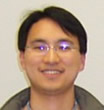 before: 1 year self-study after before: 1 year self-study after
 2005 In the Philippines (11 days, 12 lessons, 29 hours) 2005 In the Philippines (11 days, 12 lessons, 29 hours)
Composition examples
Tape-recorded interview test example
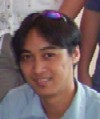 (0 + 29 hours) (0 + 29 hours)
 2005 In Hanoi, Viet Nam (12 days, 12 lessons, 29 hours) 2005 In Hanoi, Viet Nam (12 days, 12 lessons, 29 hours)
Composition examples
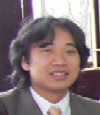 (0 + 26 hours) (0 + 26 hours)
 2003 In Tokyo (12 days, 12 lessons, 30 hours) 2003 In Tokyo (12 days, 12 lessons, 30 hours)
Composition examples
 2003 In Hanoi, Viet Nam (5 days, 5 lessons, 15 hours) 2003 In Hanoi, Viet Nam (5 days, 5 lessons, 15 hours)
Composition examples
 More about the Japanese learning system MISJ More about the Japanese learning system MISJ


MISJ is the Japanese language learning system developed by Mikiko Iwasaki.
It is very "Efficient", "Effective" and "Enjoyable"!
Because it is:
SYSTEMATIC
Everything is amazingly well organized and introduced in a step-by-step manner.
INTEGRATED
You can simultaneously learn every aspect of the language; speaking, listening,
writing, reading and cultural background.
SCIENTIFIC
Simplified patterns and rules help you to memorize the grammar and expressions
and learn how to apply them to real life situations. They are also helpful to
review the knowledge even after a long absence.
PRACTICAL & USEFUL
All lessons are connected to situational functions and themes of everyday
conversation. This means you can progress in conversation after each lesson.
 Original Programs Original Programs
MISJ consists of four major programs.
 |
Introductory Program |
| |
WELCOME PROGRAM is used for beginners.
Can be completed in 12 days, 24 hours.
Survival conversation, everyday conversation using simple sentences,
basic letter reading and writing, basic cultural understanding
|
 |
Novice Program |
| |
NOVICE PROGRAM (LEVEL 1, 2,
3 & 4) is used after the WELCOME PROGRAM. Can be completed in about
40 days, 80 hours.
Grammar which is necessary to understand 60% of the conversations
among native speakers and to build a solid foundation for the study of specific
professions and for conversations about the immediate environment
|
 |
Intermediate Program |
| |
CONVERSATION PROGRAM LEVEL 1 & 2
DICTATION, COMPOSITION & SPEECH PROGRAM |
 MISJ e-Learning Programs MISJ e-Learning Programs
 |
Introductory Program |
| |
Three e-Learning programs which correspond to
MISJ WELCOME PROGRAM, NOVICE PROGRAM LEVEL 1
and NOVICE PROGRAM LEVEL 2 are available.
For further information, please send E-mail to: info@ilpd.jp
|
| |
|
 Structure Of WELCOME
PROGRAM Structure Of WELCOME
PROGRAM
ORIENTATION
Japanese Sound System
Japanese Accent
How To Read Romanization
Numbers From 0 to 10
How do you say in Japanese/English? |
|
 |
| NOUN |
 |
 |
LESSON 1
Greetings
Introductions
How To Get Personal Information |
 |
 |
 |
LESSON 2
Talking About Places
Asking For Locations |
 |
 |
 |
 |
 |
LESSON 3
Talking About Things
Talking About Personal Belongings
Telephone Numbers
Addresses |
 |
 |
 |
LESSON 4
Big Numbers
How To Count Money
Shopping & Ordering |
 |
 |
 |
 |
| VERB |
 |
 |
LESSON 5
Present/Future Tense
Talking About Habits
Talking About Future Plans |
 |
 |
 |
LESSON 6
Past Tense
Talking About What You Did |
 |
 |
 |
 |
 |
 |
 |
LESSON 7
Talking About Your Desire
How To Ask for Help
How To Take Taxis  |
 |
 |
 |
|
|
|
 |
| ADJECTIVE |
 |
 |
LESSON 8
Present/Future Tense
How To Describe Things
How To Talk About Impressions |
 |
 |
 |
LESSON 9
Talking About Pains
Talking About Conditions
Talking About Likes & Dislikes |
 |
 |
 |
|
 |
 |
LESSON 10
Making Comments
Past Tense
How To Describe Things
How To Talk About Impressions |
 |
 |
 |
|
|
|
 |
REVIEW
ORIENTATION for the Next Program
VERB Conjugation (1)
Word Order of VERB Sentences
(ACHIEVEMENT TEST) |
|
 Original Textbooks Original Textbooks
No textbook is used during lessons. However, many original
materials such as review books and handy cards are prepared. They will
support your study between lessons, which is the most important part of learning
a language.
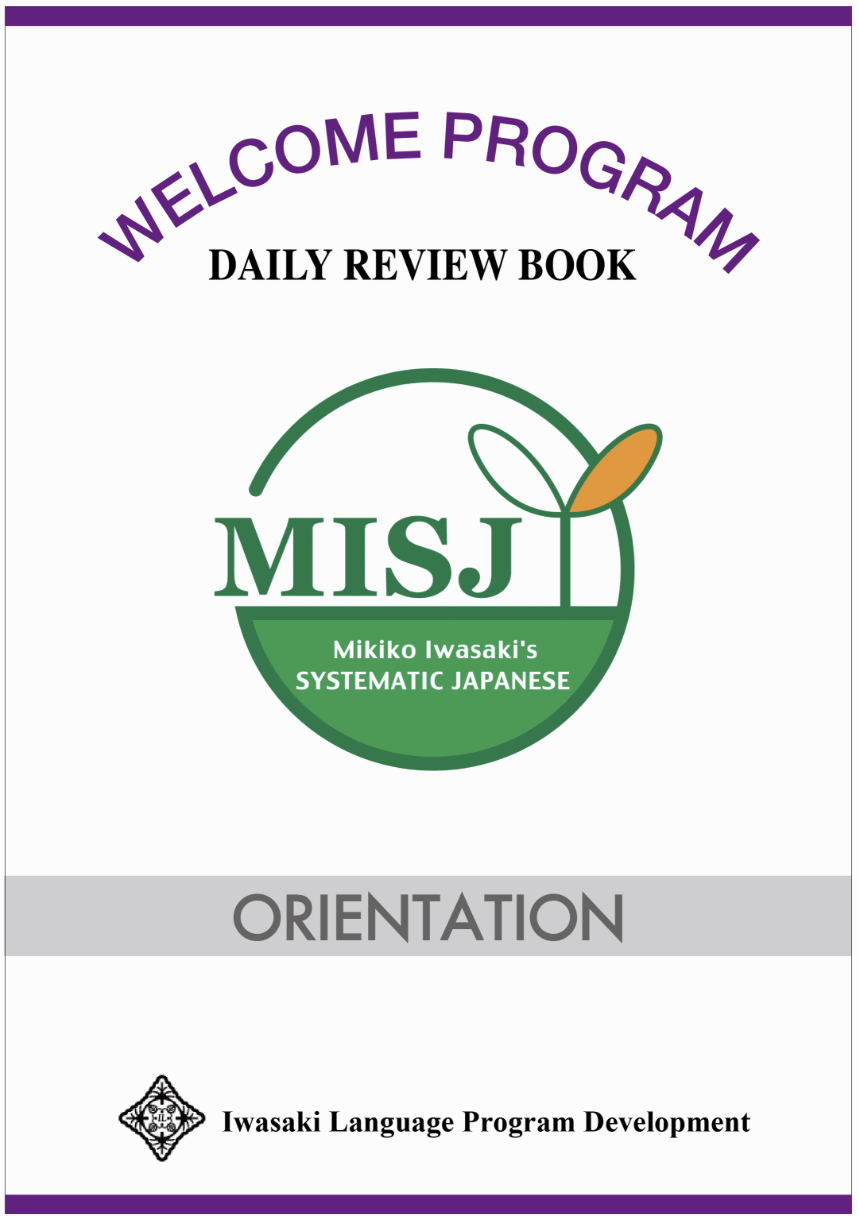
TOP HOME


|





